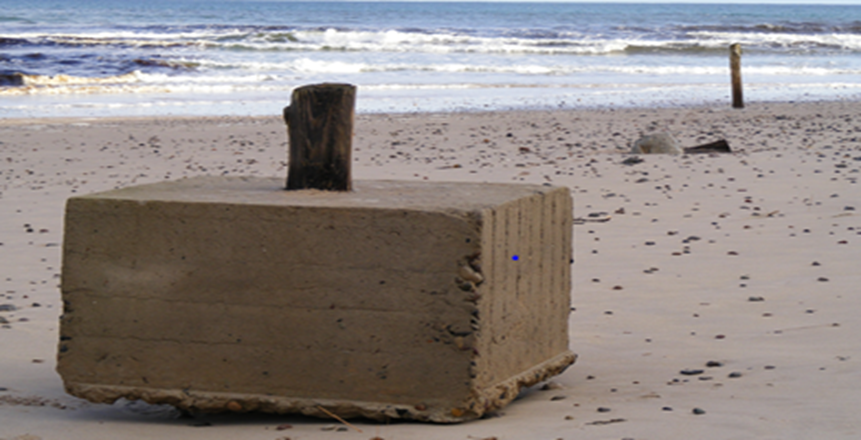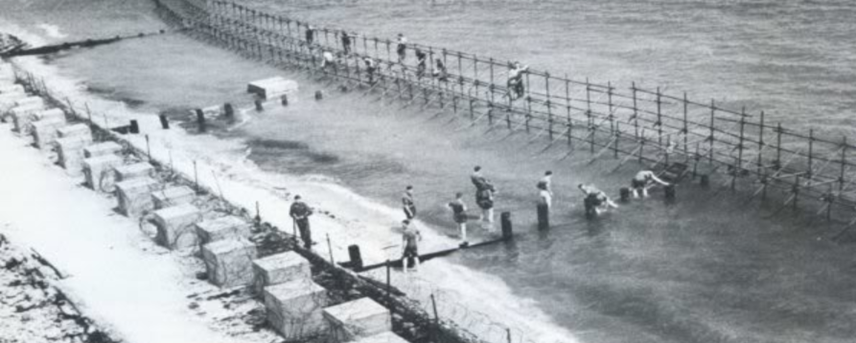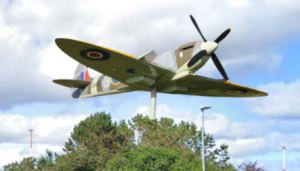Site 10. Additional Beach Defences
Today the long flat beach of Sinclair’s Bay makes a great place to walk or spend time with the family. However, in 1940 it also made an ideal landing ground for airborne assault by gliders.
Many defensive structures were hastily erected around Sinclair’s Bay to counter any attempted airborne or amphibious invasion of Britain by German military forces.
The possibility of an invasion and occupation of Caithness was taken very seriously by the military authorities, for a number of reasons. A foothold here would deny Scapa Flow as a safe base for the Royal Navy’s Home Fleet and seriously hamper its ability to patrol the Atlantic Ocean and North Sea to keep vital shipping lanes open. There were valuable airfields close by at Wick and Skitten, and a third at Castletown, from which air raids on the south of Scotland and north of England could be mounted. When combined with raids from occupied France this could have proved disastrous for Britain. A submarine base in Caithness would also give the German navy even greater access to the Atlantic Ocean and increase its ability to cut our supply lines from America.
Communications between Caithness and the south amounted to a single-track railway and a poor double-track road, both of which could easily be cut making a counter-offensive very difficult.
These concerns resulted in a frenzy of construction activity around the bay. As well as miles of anti-tank obstacles and machine gun pillboxes, anti-glider poles were erected along the beach. These were wooden poles 8 to 10 feet high (2.5 to 3m) anchored in a concrete base. After the war these poles were removed by cutting them off just above the base. Some remnants can still be found along the beach.

Beach scaffolding obstacles (officially known as Admiralty Obstacle Z.1) were also erected. These consisted of regular scaffolding tube constructed as a right-angled triangle and anchored securely in the ground, creating a continuous fence about 9 feet high (2.7m).

The photograph shows how the scaffolding would normally have been erected below the high-water mark to trap landing craft. The scaffolding at Sinclair’s Bay was unusual because it was constructed on land behind the dunes. It is uncertain why, but testing of this ‘make do’ defensive structure had shown that barges could easily breach the fence, however landing craft and tanks struggled to overcome it. It was known that barges were being assembled in northern French ports in preparation for an invasion, so it may have been thought here that erection on land against tanks would be a more effective use.
No beach defence would be complete without barbed-wire obstacles, and Sinclair’s Bay had its share. These acted not only as an obstacle to invaders but also as a barrier to keep unauthorised civilians out of the danger area.

A minefield had been laid all round Sinclair’s Bay and the area was just as dangerous to the local population as it was to any German soldier, so miles of barbed-wire fencing were stretched the length of the bay. Barbed-wire fences were made from lengths of angle-iron uprights supported by tension wires. Five strands of barbed-wire were strung between to form the fence. Sometimes screw pickets were used instead of angle-iron. Remains of these fences can still be seen amongst the dunes.


